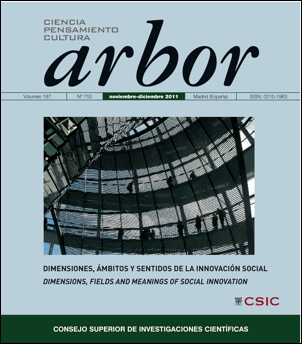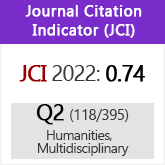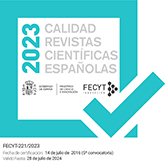Cambio de paradigma en los estudios de innovación: el giro social de las políticas europeas de innovación
DOI:
https://doi.org/10.3989/arbor.2011.752n6002Palabras clave:
Innovación social, políticas de innovación, tecnociencias socialesResumen
Los estudios de innovación han experimentado un giro social en esta primera década del siglo XXI, que comienza a trasladarse a las políticas de innovación. Estamos ante un nuevo paradigma en ese tipo de estudios, no sólo ante una nueva ampliación de los tipos y modelos de innovación. Para ello, se analizan algunos de los primeros marcos conceptuales de la innovación social (Goldenberg y grupo Crises en Canadá, Young Foundation y NESTA en el Reino Unido) y se comenta el avance del nuevo paradigma en la Unión Europea. Se concluye que las tecnociencias de innovación social parecen haber llegado a un punto de amplio consenso: las innovaciones sociales surgen en primera instancia de la sociedad civil, pero también pueden ser generadas o implementadas por el sector público y por el sector privado. Además, tanto los medios como los fines para promoverlas han de ser predominantemente sociales.
Descargas
Citas
Bakhski, H.; Schneider, Ph. and Walker, Christopher (2008): Arts and Humanities Research and Innovation, NESTA, Arts and Humanities Research Council, noviembre 2008.
Chesbrough, H. (2003): Open Innovation, Mass., Harvard Business School Press.
Chesbrough, H. (2006): Open Business Models, Mass., Harvard Business School Press.
Cloutier, Julie (2003): Qu’est-ce que l’innovation sociale?, Quebec, Cahiers de Crise.
Deroïan, F. (2002): “Formation of social networks and diffusion of innovations”, Research Policy, 31 (5), 835-846. http://dx.doi.org/10.1016/S0048-7333(01)00147-0
DIUS (13 marzo 2008): Innovation Nation, Department for Innovation, Universities & Skills (DIUS), UK Government, Crown.
Echeverría, J. (2008): “El manual de Oslo y la innovación social”, Arbor, 732, pp. 609-618.
Echeverría, J. (2008): “Aportaciones preliminares a los estudios de innovación social”, en I. Mendiola (ed.), Textos y Pretextos para repensar lo social, Bilbao, Universidad del País Vasco, pp. 81-96.
Echeverría, J. (2010): “De las políticas de investigación a las políticas de innovación”, Acta Sociologica (México), 55:1, pp. 13-37.
Flowers, S.; Von Hippel, E.; De Jong, J. y Sinozic, T. (2010): Measuring User Innovation in the UK, London, NESTA.
Gurrutxaga, A. (2009): Recorridos por el cambio, la innovación y la incertidumbre, Bilbao, Universidad del País Vasco.
Gurrutxaga, A. y Echeverría, J. (2011): La luz de la luciérnaga. Diálogos de innovación social, Madrid, Ed. Plaza y Valdés. Innovation sociale et innovation technologique (2000), Quebec, Conseil de la Science et de la Technologie.
Klein, J. L. and Harrison, D. (eds.) (2006): L’innovation sociale, Quebec, Presses de l’Université de Quebec.
Lundvall, B. A. (1992): National systems of Innovation: Towards a theory of interactive learning, London, Pinter.
Lundvall, B. A. (1998): Innovations as an Interactive Process: From user-producer Interaction to the National System of Innovation, en G. Dosi, C. Freeman, R. Nelson, G. Silverberg and L. Soete (Eds.), Technical Change and Economy Theory, London, Pinter Publisher, pp. 349-369.
Miles, I. and Green, L. (2008): Hidden innovation in the creative industries, NESTA Research Report, julio.
Mulgan, G. (2007): Social Innovation: what is it, why it matters, how it can be accelerated, London, Young Foundation, Basingstoke Press.
Mulgan, G. et al. (2007): In and out of sync: the challenge of growing social innovations, London, NESTA Report.
Mulgan, G. (2007): Ready or Not: Taking innovation in the Public Sector Seriously, London, Young Foundation.
Murray, R.; Caulier-Grice, J. and Mulgan, G. (2010): The Open Book of Social Innovation, London, Young Foundation and NESTA.
Nelson, R. R. (1993): National Systems of Innovation, Oxford, Oxford Univ. Press.
NESTA (2006): The Innovation Gap, London, NESTA.
NESTA (2007): Hidden Innovation, London, NESTA.
NESTA (2009): The Innovation Index. Measuring the UK’s investment in innovation and its effects, NESTA Index Report, noviembre.
Oakley, K.; Sperry, B. and Pratt, A. y H. Bakhski (ed.) (2008): The art of innovation. How fine arts graduates contribute to innovation, NESTA Research Report 16, septiembre.
OECD/European Communities (2005): Oslo Manual: Guideliness forCollecting and Interpreting Innovation Data, 3.ª ed., Paris, OECD/EC.
OECD (2010): The OECD Innovation Strategy, Getting a Head Start on Tomorrow, Paris, OECD.
SIX and Young Foundation: Study on Social Innovation, European Union/Young Foundation 2010.
Von Hippel, E. (1988): The sources of innovation, New York, Oxford Univ. Press.
Von Hippel, E. (2005): Democratizing Innovation, Cambridge, MA: MIT Press.
Descargas
Publicado
Cómo citar
Número
Sección
Licencia
Derechos de autor 2011 Consejo Superior de Investigaciones Científicas (CSIC)

Esta obra está bajo una licencia internacional Creative Commons Atribución 4.0.
© CSIC. Los originales publicados en las ediciones impresa y electrónica de esta Revista son propiedad del Consejo Superior de Investigaciones Científicas, siendo necesario citar la procedencia en cualquier reproducción parcial o total.Salvo indicación contraria, todos los contenidos de la edición electrónica se distribuyen bajo una licencia de uso y distribución “Creative Commons Reconocimiento 4.0 Internacional ” (CC BY 4.0). Puede consultar desde aquí la versión informativa y el texto legal de la licencia. Esta circunstancia ha de hacerse constar expresamente de esta forma cuando sea necesario.
No se autoriza el depósito en repositorios, páginas web personales o similares de cualquier otra versión distinta a la publicada por el editor.















